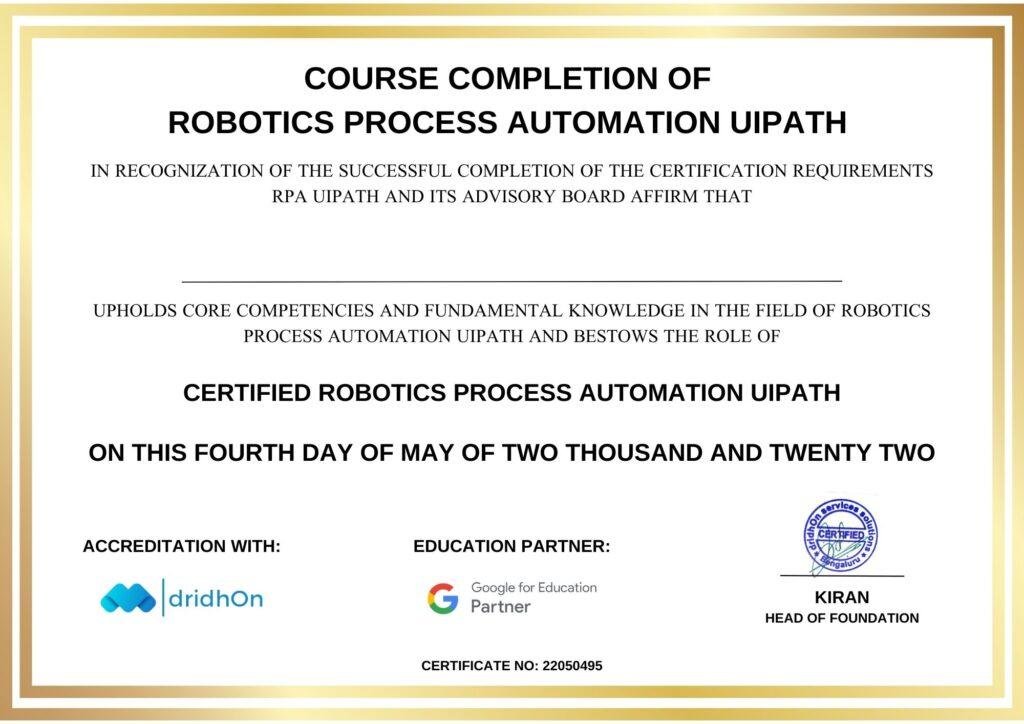Data Science Interview Questions Data Science Interview Questions 1. What...
Read MoreWHAT IS RPA? Importance and its tools
The evolution of RPA (Robotic Process Automation) can be traced back to the early 2000s, when software traders are developing tools to automate business processes. From mid-2010’s RPA gained an enormous popularity in a business sector and became one of the mandate division of organization’s software.
Since then, RPA has seen a continuous growth in popularity and its adoption with enterprises of all sizes and other organization which are looking to automate their business processes in order to improve their efficiency and productivity. As Robotic Process Automation technology continuously evolving and maturing the interest shown by enterprises are increasing day by day
Robotic Process Automation is basically a software technology that allows enterprises to self-operate the repetitive and day to day tasks in their business processes. RPA software bots is programmed in such a way that it impersonate human actions and interact with various digital platforms such as websites, databases, and web applications.
RPA is more frequently used to automate the highly bulkier, low-complexity tasks that requires a prominent manual effort. (Examples of processes that can be automated using RPA include data entry, invoice processing, and customer service interactions.) (infographics should be made)
Importance of Robotic Process Automation
RPA, or Robotic Process Automation, is becoming more predominant in today's business environment for many of the reasons.
Here we have found of the key reasons why RPA(Robotic Process Automation) is important:
1. Efficiency and cost savings: RPA can self-operate the routine and time-consuming tasks, in turn it frees up employees to focus on more complicate and creative tasks. This would lead to significant efficiency gains and cost savings for the enterprises.
2. Accuracy and consistency: RPA bots will perform tasks with a high degree of accuracy and consistency, with reducing the errors and ensuring that processes are completed with in given span of time and more accurately.
3. Scalability: RPA can be easily ordered up or down based on the needs of the enterprises. This scalability makes it a most flexible and adaptable to the organization that can support growth and change.
4. Compliance: RPA will help the enterprises to ensure obedience with regulations and standards by enforcing consistent and inspectable processes.
5. Competitive advantage: By adopting RPA, organizations can gain a competitive advantage by improving their speed, dexterity, and efficiency.
TOOLS of Robotic Process Automation:
There are several important tools that are commonly used in RPA (Robotic Process Automation).
Here are a few of the most important ones:
1. UiPath: UiPath is most known RPA tool that allows users to create and deploy software robots to automate business processes. It furnishes with a visual drag-and-drop interface that makes it easy to build bots, and supports a wide range of integrations with other systems.
2. Automation Anywhere: Automation Anywhere is another popular RPA tool that allows users to automate tasks using a drag-and-drop interface. It supports a wide range of integrations and furnishes some of the prominent features such as bot scheduling, error handling, and auditing.
3. Blue Prism: Blue Prism is an enterprise-grade RPA tool which has a wide range of features for creating and deploying software robots. It includes a drag-and-drop interface in addition to it also supports for multiple languages, and advanced analytics and reporting capabilities.
4. WorkFusion: WorkFusion is an RPA tool that includes both robotic process automation and artificial intelligence capabilities. It provides a wide range of data extraction and processing tasks, and includes features for managing and deploying bots.
5. Kofax: Kofax is an RPA tool that includes exclusive features for automating business processes, including data extraction, document processing, and workflow automation. It also includes features for managing bots, monitoring performance, and auditing processes.
Overall, these RPA tools plays a very significant role in providing the functionality and flexibility that enterprises need to self-operate their business processes and improve their operations and efficiency.
Conclusion
RPA aids the organizations in improving their efficiency, reducing the errors, and saves the costs. By self-operating repetitive tasks, employees can focus on higher-value work that requires more manual effort and creativity. In addition to it RPA(Robotic Process Automation) helps enterprises to operate their work without the need of additional staff.
These benefits of RPA makes the businesses to attract to it and Hence, creates more job opportunities.
Top 30 DevOps Interview Questions & Answers (2022 Update)
Top 30 DevOps Interview Questions & Answers (2022 Update) Top...
Read MoreAnti Money Laundering Interview Questions
Anti Money Laundering Interview Questions Anti Money Laundering Interview Questions...
Read More







